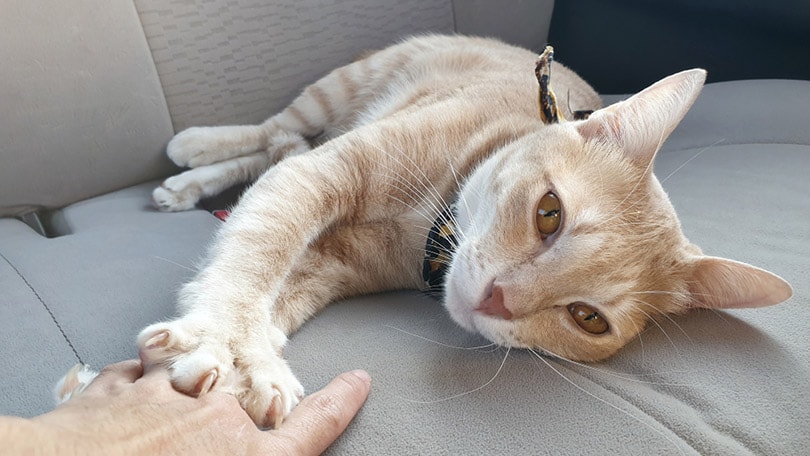VET APPROVED

The information is current and up-to-date in accordance with the latest veterinarian research.
Learn more »Click to Skip Ahead
Arthritis is a progressive condition that causes the joints to become painful and inflamed. It is believed that around 90% of cats over the age of 10 have osteoarthritis in at least one joint, which may start impacting their quality of life and mobility.
If your cat has been diagnosed with arthritis, there are some steps you can take under the guidance of your vet toward making them more comfortable, including considering therapeutic massage, alongside pain medications prescribed by the vet, other forms of physiotherapy, nutritional adjustments and nutraceuticals.
There are right and wrong ways to go about massaging an arthritic cat, and an improper technique or one performed by an untrained individual can cause pain or discomfort. For this reason, we recommend consulting with your vet first. They can recommend a trained professional who specializes in therapeutic massage and other types of veterinary physiotherapy and rehabilitation.
There are some techniques and circumstances when therapeutic massage can be done at home, but only after you have been instructed on how to perform the massage correctly. Here are some important considerations if you’re planning on massaging your cat yourself.

The 6 Key Considerations for Massaging an Arthritic Cat
1. Consult with a Veterinary Professional
If you believe your cat is experiencing mobility issues, limping, stiffness, or pain, it’s important to first consult with a vet. They can examine the cat and establish where it hurts and how to best treat it. Some conditions such as acute and mild soft tissue injuries are likely to improve with time, rest, and pain meds, while others are more chronic in nature and require long-term management.
Not all types of painful muscular or joint conditions will benefit from massage. There are also certain contraindications when it should be avoided, such as in cases of open wounds, acute and sudden inflammation, pain, tumors, and others.
If your vet feels your kitty will benefit from a therapeutic massage or another type of physiotherapy, they can recommend a trained professional, which can also guide you through the process. Some cats will tolerate massage better than others, and not all cat owners will feel comfortable continuing the treatment at home. For best effects, a licensed professional should be the one performing the massage. However, it is also possible for them to give you basic training and tips so you can continue with gentle massage at home.
Overall, speaking with a veterinarian can help you understand how cat massage works for arthritis and whether your cat might benefit from it.
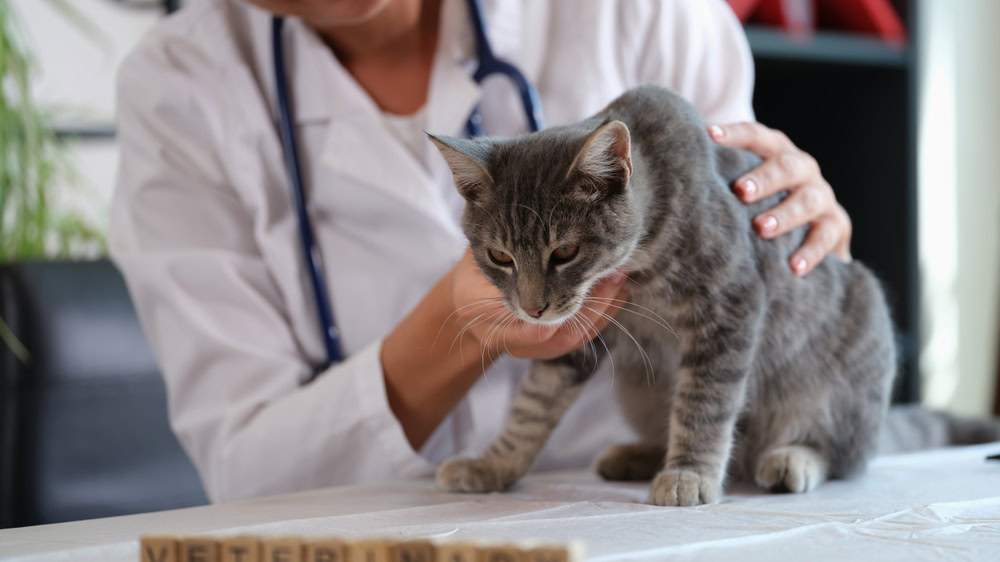
2. Familiarize Yourself Various Types of Therapeutic Massage
There are several different types of therapeutic massage for cats, and they will differ depending on the pressure applied, the type of stroke and touch, and the purpose for which they are indicated.
Some of the veterinary massage techniques include:
- A simple stroke is how every massage should begin. By petting the cat, areas of pain or discomfort can be identified, as well as any swelling or lumps, and this gentle and slow approach will help the cat relax.
- Effleurage, or stroking, is a very gentle massage used to relax and make the cat more comfortable, by using open hands, and progressing from the neck all the way down to the back and towards the legs, depending on the cat’s tolerance levels.
- Petrissage is a kneading type of tissue massage used for increasing blood supply. It’s performed by wringing, skin rolling, and pick-up-and-squeeze techniques, and should only be used in a relaxed cat, as sometimes they may cause a degree of discomfort.
- Tapotement, or rhythmic percussion, is a type of massage not all cats will enjoy. It can be performed with the edge of the hand, a cupped hand, or the fingertips, increasing blood flow and warming up the tissue.
A trained veterinary physiotherapist can advise you on the best therapeutic massage technique that would be beneficial to your kitty. They can adjust it to your cat, based on their area and level of pain and tolerance.
3. Learn the Technique
Not everyone will feel comfortable trying to massage their cat at home and that’s okay. After all, veterinary physiotherapists spend years training and learning feline anatomy, in order to get it right. Cats are also different from dogs and may find a lot of these techniques unacceptable due to various reasons, be it discomfort, pure boredom, or just unwillingness to stay in one spot.
If you are keen to try massaging your cat at home, after you have consulted with your vet, it’s important to learn a few of the more basic techniques from your veterinary physiotherapist. They can show you which areas to focus on, and which to avoid, as well as how much pressure to apply. It’s also a good idea to check back with them on a regular basis, so they can monitor your cat’s progress, and yours, and readjust the techniques accordingly.
In some cases, a massage at home will not be possible or recommended, based on the cat’s condition and level of pain, and these cases will need to see the physiotherapist instead.
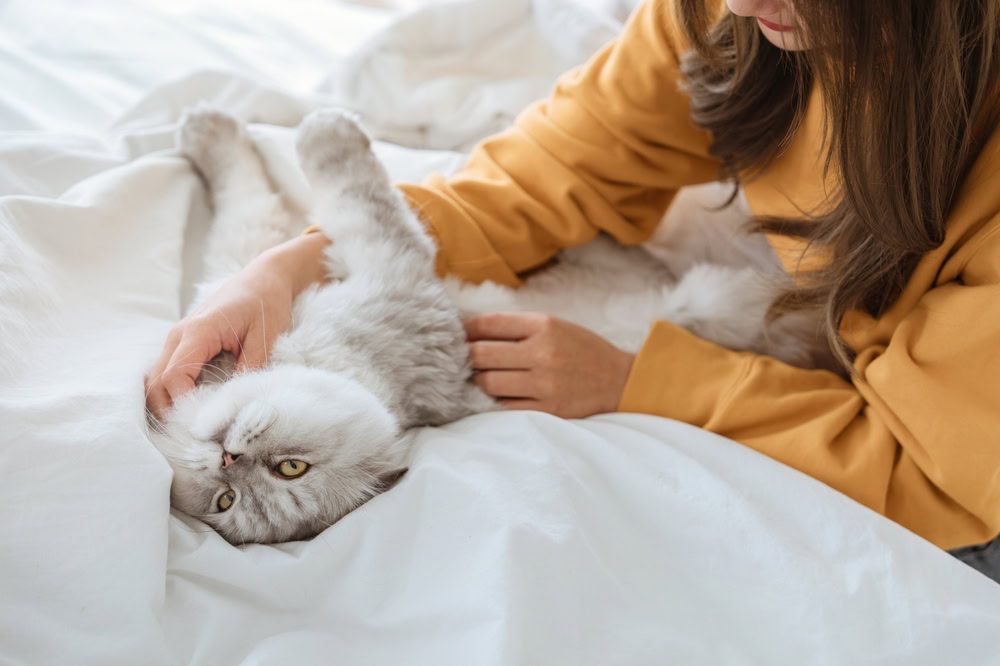
4. Choose the Best Time and Place
You’ll want to pick a suitable time to perform your cat’s massage, like when they’re feeling relaxed and content. If your cat is irritable for whatever reason, postpone the massage until they’re feeling better. If they seem painful or unwell, make sure to get them checked out by your vet as soon as possible.
It’s also crucial to choose an appropriate place to carry out the massage. Choose somewhere quiet and peaceful instead of an area where there’s a lot going on. Make sure you are not disturbed and aim for the time of the day when your cat is napping and resting, as they will enjoy the gentle touch, or place them on your lap, the couch, or anywhere they feel comfortable and relaxed.
5. Gauge Your Cat’s Response
If your cat seems relaxed and comfortable, continue massaging them in the way you were taught. If you go gently and are tuned into your cat’s reactions, you’re unlikely to cause them discomfort. However, if your cat does show any signs of discomfort, reduce the pressure significantly and try avoiding the area. If they want to get up and leave, let them do so.
If your cat is no longer showing any signs of lameness, pain, or stiffness when not massaged, give them a few days’ break before attempting again. If the pain continues or it seems to be worsening, they should be examined by the vet, as they will likely require pain meds or different therapeutic physiotherapy techniques.
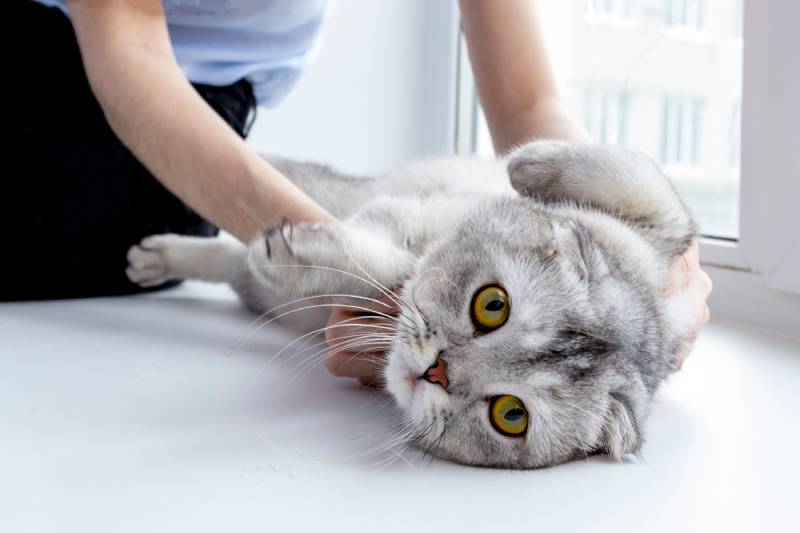
6. Consistency
If the massage seems to ease your cat’s pain and relax them, repeat the process as necessary. If your cat does not respond well to the massage, please consult your vet for advice—they may need another form of pain management.
Keep up with your routine veterinary checkups and consult with the veterinary physiotherapist who will monitor your progress as well.

Massaging Your Cat: Safety Tips
It’s important to take great care when massaging a cat to ensure they don’t end up in more pain or discomfort than before. To reiterate, we recommend letting a professional do the massage, at least for the first few times, so that you can feel confident performing it in the future.
- Make sure you and your cat are relaxed when you perform the massage.
- Keep the pressure light and gentle. Applying too much pressure when massaging a cat, especially an arthritic one, can make matters worse.
- Avoid pressing on your cat’s stomach.
- Never use essential oils as they are profoundly toxic to cats.

How to Help an Arthritic Cat in Other Ways
In addition to veterinary-prescribed medications and massage, there are other ways to care for and make your arthritic cat more comfortable at home.
1. Grooming
Cats with mobility issues may have difficulty cleaning themselves, so you might need to offer a helping hand. Brush them regularly and ensure their claws are trimmed, as overgrown claws can dig into the pads, leading to pain and infection.
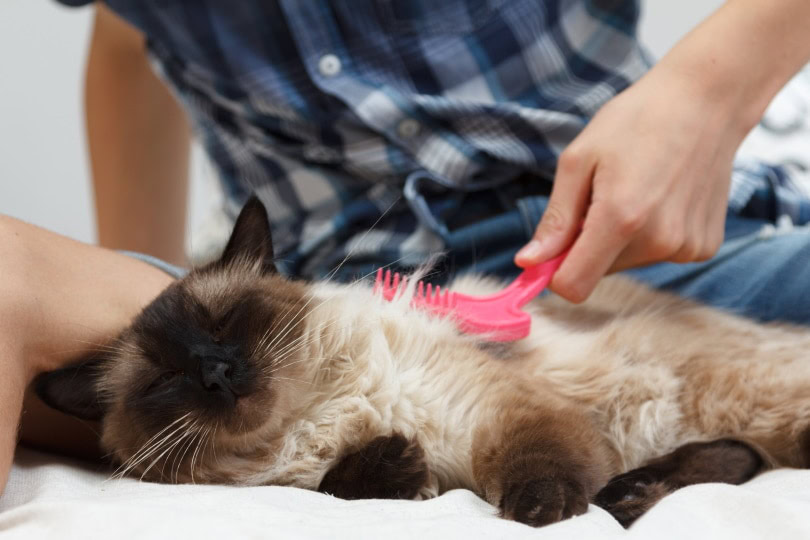
2. Adapt Their Environment
Arthritic cats struggle with mobility, so climbing in and out of their litter box or bending down to reach their food bowl may not be as easy as it once was, so it’s best to put litter boxes and food and water bowls on one floor of your home to prevent the need for your cat to use the stairs. Increase the number of litter boxes so they can be more spread out.
Provide raised food bowls to prevent your cat from having to bend down, and make sure their litter box is low enough for them to step into comfortably. Avoid letting your cat walk on slippery surfaces, and always make sure they have a warm and comfortable bed to retreat to.
3. Install Ramps
Since jumping and stairs become more difficult for arthritic cats, you can help them by installing ramps leading to areas they can no longer comfortably reach, like the couch or windowsill.
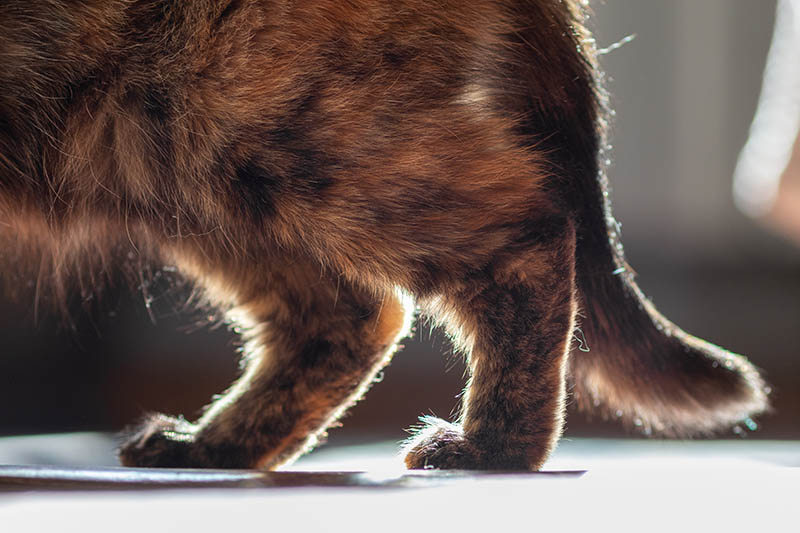
4. Manage Their Weight
Obesity puts extra pressure on a cat’s joints, so weight management is crucial. Weighing their food in the proportions recommended for their size is a great way to make sure your cat isn’t overeating.
5. Use Heat Pads
Elderly cats will seek out warm and cozy spots to rest in. Getting a heating pad, which can be placed in areas they prefer sleeping in, is another way to ensure they are warm and comfortable. Make sure they are supervised when using it, and check it often to make sure it’s functioning adequately. Avoid using human heat pads as they may get very warm and pose a risk of skin burn.


Final Thoughts
Though arthritis isn’t curable in the sense of the word, its signs can be managed with vet-prescribed pain and anti-inflammatory medications, environmental changes, and home care like grooming and massage. Cat therapeutic massage is always best performed by a professional, but you can pick up some tips for performing basic pain-relieving massages at home.
If you suspect that your cat has arthritis or you’re considering massage as a method of pain management, please consult your vet to determine whether this would be the best course of action for your cat.
- Helping Your Cat with Osteoarthritis | VCA Animal Hospitals
- Therapeutics
- How to Make Your Arthritic Cat More Comfortable | Zoetis Petcare
- Arthritis in Cats | VCA Animal Hospitals
- Massage Therapy for Dogs and Cats
- Feline Rehabilitation
- Small Animal Massage Therapy: A Brief Review and Relevant Observations – PubMed
Featured Image Credit: RJ22, Shutterstock
